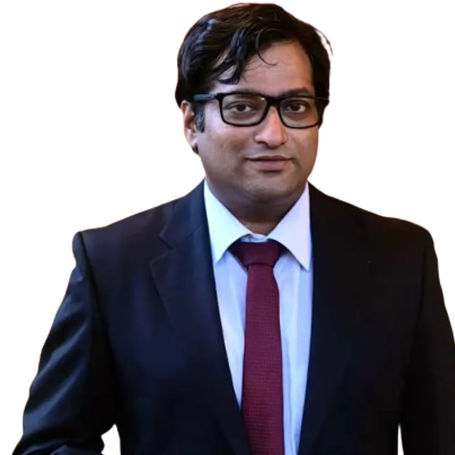The thyroid cartilage is a tough, flexible tissue that constitutes the front part of an individual’s larynx (voice box). It is responsible for protecting and supporting the vocal cords and helps create the sound of a person’s voice. This cartilage also forms the Adam’s apple, which usually protrudes out as a lump in the front part of the neck.
Learn in detail about the thyroid cartilage’s anatomy, functions, development and growth, related disorders, treatment procedures, and more.
Anatomy of Thyroid Cartilage
Within the larynx, there are nine cartilages among which the thyroid cartilage is the largest and uppermost one. It consists of two plates (known as laminae), which join at the front at an angle of 90 to 120 degrees, forming a protrusion called the Adam’s apple, which is generally more prominent in men.
Made up of hyaline cartilage, the thyroid cartilage forms a rigid shield for the airway and provides support to most of the laryngeal structures. Meanwhile, its internal surface is covered by a mucous membrane and serves as an attachment point for numerous muscles and laryngeal ligaments, like vocalis muscles, vocal ligaments, etc.
Function of Thyroid Cartilage
Due to its location, shape, and superficial position, the main function of the thyroid cartilage is protecting the delicate structures of the larynx. Its rigid structure forms the larynx’s anterior wall that shields the internal structures, like the vocal cords and the muscles of the larynx.
Additionally, the thyroid cartilage acts as a secondary sex characteristic in men, through the increase of the laryngeal prominence during puberty and modulation (deepening) of the voice.
Development and Growth of Thyroid Cartilage
Throughout the fetal maturation phase, the thyroid cartilage grows in size, descends, and becomes more cylindrical in shape. Its two laminae fuse anteriorly, apart from in the superior-most position, resulting in the formation of the thyroid notch.
During childhood, the laryngeal prominence is the same for both males and females. However, as puberty starts, the Adam’s apple starts protruding with a higher interlaminar angle (ILA) and greater anterior angulation. Also, their larynges start growing larger due increase in different hormone levels, chiefly testosterone.
Additionally, during puberty, the calcification of the thyroid cartilage gradually begins and continues till adulthood. By middle age, the thyroid cartilage is heavily ossified in the case of most adult males.
Thyroid Cartilage and Voice Disorders
There are several conditions that can affect the thyroid cartilage and its associated regions, leading to voice disorders. They are listed below:
- Common cold
- Inflammation of oesophagus
- Goitre
- Candida (fungal infection) in oesophagus
- Pharyngitis (inflammation at the back of one’s throat)
- Laryngitis (inflammation in the voice box)
- Laryngeal cancer
- Thyroid cancer
How to Diagnose Disorders in Thyroid Cartilage and its Associated Region?
Based on the medical condition, the diagnostic procedures will tend to vary. Here are some of the most common diagnostic methods that doctors use for assessing the larynx and its associated regions:
- Flexible Laryngoscopy: This procedure involves using a laryngoscope to look for irregularities, masses, and pooling of secretions in the vocal cords.
- Laryngeal Electromyography: Also known as laryngeal EMG, it is used for assessing muscle activity in the throat and vocal cords by attaching small electrodes on the sides of the voice box.
- Videostroboscopy: It evaluates the laryngeal structure and functioning in minute detail by using a laryngoscope that is connected to a strobe light and recording equipment.
- Esophagogram: Also known as barium swallow, it is a type of X-ray that enables doctors to see the esophagus’s structure and functioning when swallowing.
- Videofluoroscopic Swallow Study (VFSS): It is an X-ray study that involves eating and drinking items containing Barium, enabling doctors to assess their progression from the throat.
- Throat Biopsies: If healthcare providers find an unusual-looking bit of tissue or suspicious mass in the throat, they take a small sample called a throat biopsy and send it for analysis to the lab.
Surgical Interventions Involving Thyroid Cartilage
There are certain thyroid-related surgeries that can have an indirect impact on the thyroid cartilage and its associated regions. They are:
- Total Thyroidectomy: This surgery involves removing the entire thyroid gland.
- Thyroid Lobectomy: Healthcare providers remove one-half of the thyroid gland.
- Isthmusectomy: It is a surgical procedure that removes the tissue connecting the two lobes of the thyroid gland.
Now, due to cosmetic reasons or gender affirmation treatments, individuals can opt for a chondrolaryngoplasty or laryngeal shave. It is a surgical procedure in which the Adam’s apple size is reduced. Alternatively, people can go for an augmentation surgery in which the Adam’s apple size is increased by taking cartilage from other parts of the body.
After the surgery, side effects like slight pain, swelling, bruising, sore throat, weak voice, and difficulty swallowing may persist for a few days. However, after the initial swelling subsides, patients are able to see the end results.
Clinical Importance in Thyroid Surgery
For surgical procedures like thyroidectomy, the laryngeal prominence of the thyroid cartilage acts as an essential anatomical landmark. It allows surgeons to accurately locate and access the thyroid gland while significantly reducing the chances of damage to nearby structures like the recurrent laryngeal nerve.
Also, as the thyroid cartilage acts as an attachment point for numerous muscles in the neck region, it serves as an essential landmark during dissection and retraction procedures, which are usually performed to get better access to the thyroid gland.
In this regard, doctors usually take precautions like performing a physical examination and X-rays to locate the exact position of the thyroid cartilage. Also, they avoid directly approaching the laryngeal prominence in order to prevent any damage.
Conclusion
The thyroid cartilage plays a major role in protecting the larynx and acting as a connection point for various neck muscles. It also acts as a secondary sex characteristic for males and serves as a crucial anatomical landmark for surgeons when performing thyroid or trachea-related surgeries.
Additionally, medical researchers are currently studying the ossification patterns of this cartilage. It will help enhance their understanding of the factors that complicate the identification of thyroid cartilage invasion through CT scans in cases of laryngeal squamous cell carcinoma, a type of laryngeal cancer.
Consult Top Endocrinologists

Dr. Nithin Reddy Modhugu
Endocrinologist
6 Years • MBBS, MD (General Medicine), DNB (Endocrinology)
Hyderabad
Dr. Nithin's Endocrine Clinic, Hyderabad
50+ recommendations

Dr. Gayatri S
Endocrinologist
4 Years • Suggested Qualifictaion- MBBS, MD (Internal Medicine), DM (ENDOCRINOLOGY)
Nellore
Narayana hospital, Nellore
Dr. Shiva Madan
Endocrinologist
10 Years • MBBS , MD (General medicine) , DM (Endocrinology)
Bikaner
Sushma diabetes and Endocrine center, Bikaner

Dr. Venkata Rakesh Chintala
Endocrinologist
8 Years • MBBS,MD( GEN MEDICINE), DM ( ENDOCRINOLOGY)
Krishna district
Sanjeevani Hospital, Krishna district

Dr. Arunava Ghosh
General Physician/ Internal Medicine Specialist
9 Years • MBBS,MD(GENL.MED.),DM(ENDOCRINOLOGY)
Kolkata
VDC Clinic, Kolkata
